TABLE OF CONTENTS
NVIDIA’s familiar mid-cycle ‘SUPER’ refresh is finally here. Well, at least one part is: the RTX 4070 SUPER GPU. We’re getting a decent bump to core count, and a decent launch MSRP of $599.
More graphics horsepower for a lower price? Yes, please!
This isn’t the $499 graphics card everyone wishes existed, but I guess we’ll have to get used to the $100 price bump for a 70-class card.
The RTX 4070 SUPER is truly a 70-class card – finally. Its core counts, clocks, and specifications now more closely resemble what we’ve come to expect from an xx70 product! In fact, if NVIDIA had launched this GPU in the first place, I’m sure it would have received rave reviews from everyone.
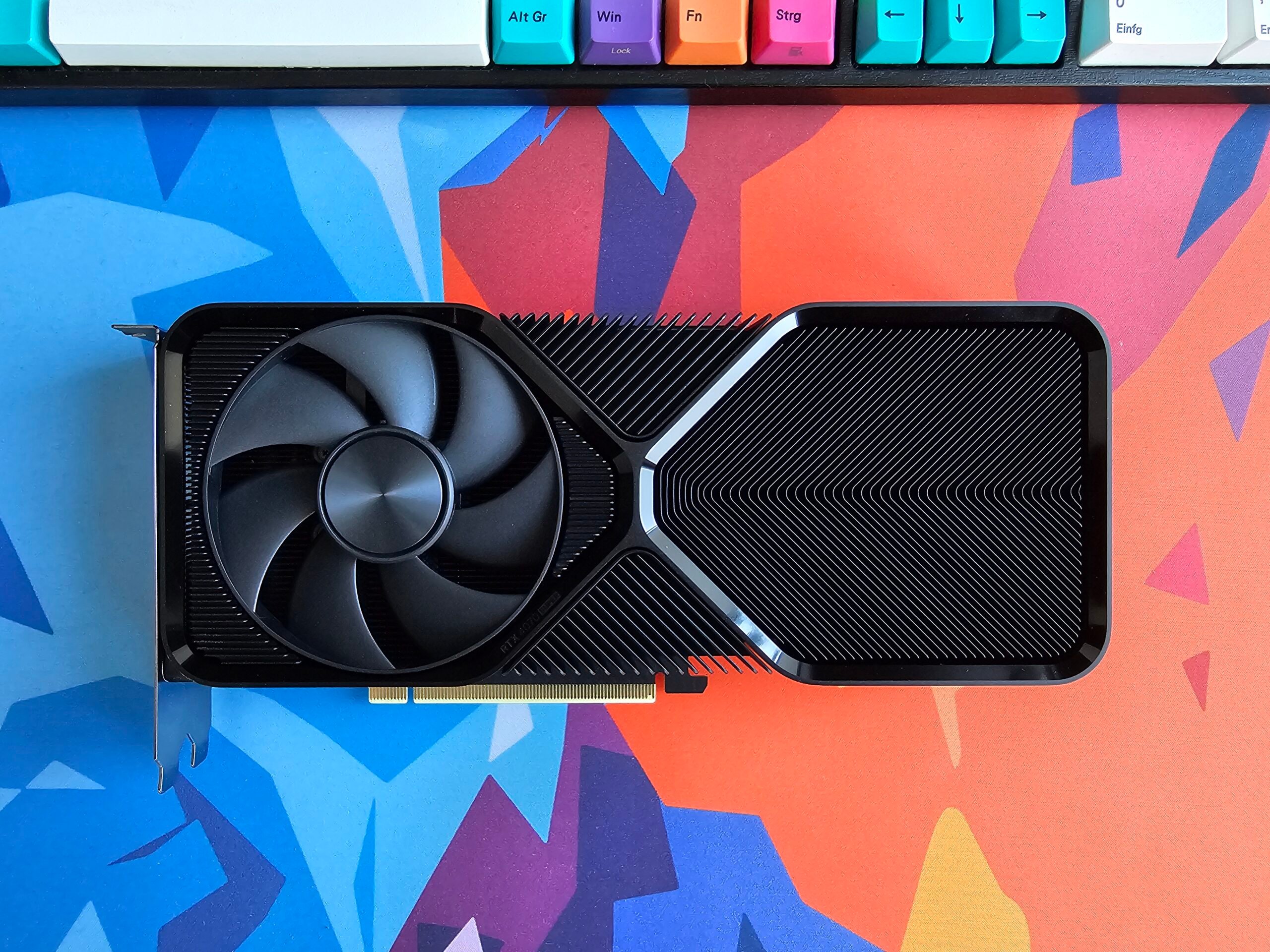
But that didn’t happen, so now we have no choice but to account for the fact that a new GPU generation will be coming along in around a year.
The RTX 4070 SUPER Founders Edition looks identical to an RTX 4070 except for the ‘SUPER’ moniker on the shroud and boasts a compact 2-slot design. Its width makes it perfect for multi-GPU setups for rendernodes, so hopefully, its performance will hold up!
RTX 40 SUPER Lineup: Where Does the RTX 4070 SUPER Fit in?
NVIDIA’s RTX 40 SUPER launch slides clarify that some of these new cards will replace some of the original RTX 40-series graphics cards. Here’s that slide again:
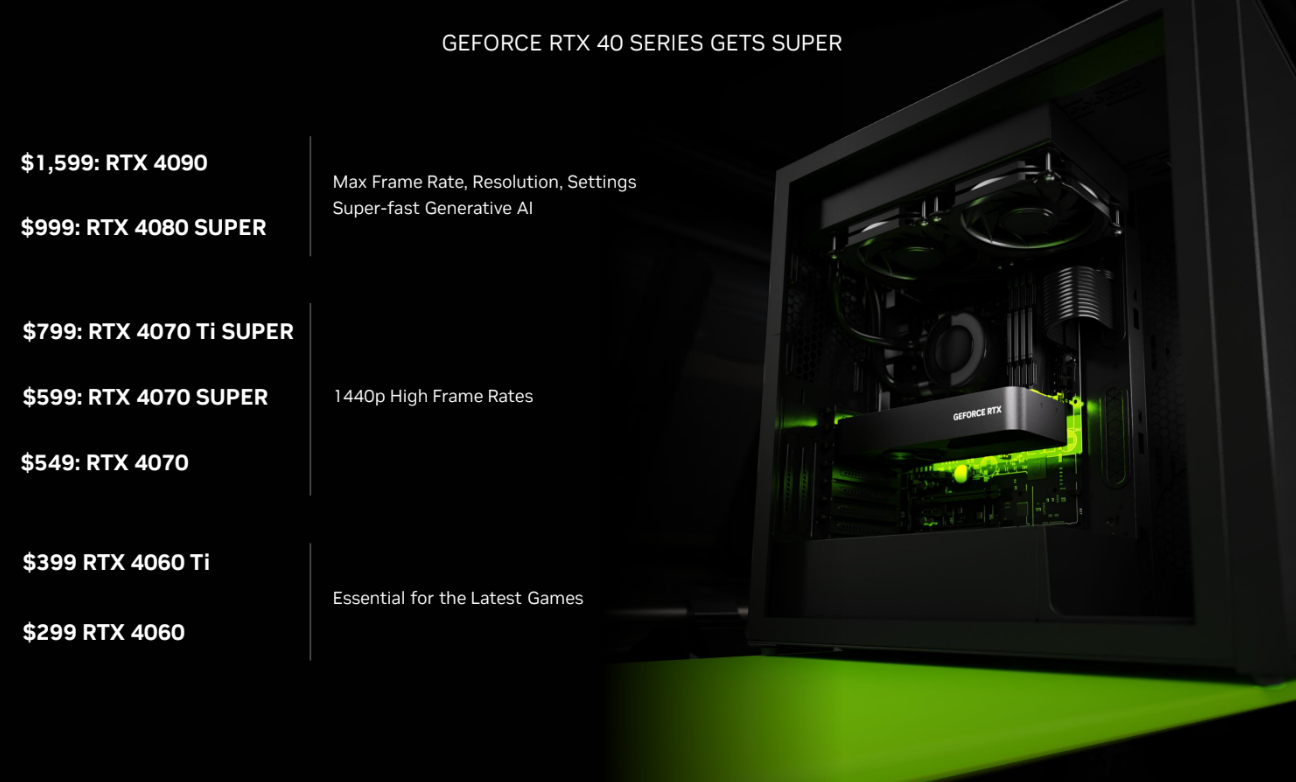
Here, you can see that NVIDIA is discontinuing both the RTX 4080 and the RTX 4070 Ti. It’s probably because the incoming SUPER GPUs make these models largely irrelevant.
To that end, I’d argue that the RTX 4070 with just a $50 price drop is also irrelevant to a certain degree, but NVIDIA seems to be sticking to it for now.
RTX 4070 SUPER Specs and Prices Compared: Taking a Closer Look at the Full RTX 40-Series Lineup
Let’s look at the specifications for the new SUPER cards and see how the RTX 4070 SUPER stacks up against the rest of the 40-series lineup.
| RTX 4070 | RTX 4070 SUPER | RTX 4070 Ti (Discontinued) | RTX 4070 Ti SUPER | RTX 4080 (Discontinued) | RTX 4080 SUPER | RTX 4090 | |
|---|---|---|---|---|---|---|---|
| VRAM | 12GB | 12GB | 12GB | 16GB | 16GB | 16GB | 24GB |
| GPU Die | AD104 | AD104 | AD104 | AD103 | AD103 | AD103 | AD102 |
| Shading Units (CUDA) | 5,888 | 7,168 | 7680 | 8,448 | 9728 | 10,240 | 16,384 |
| RT Cores | 46 | 56 | 60 | 66 | 76 | 80 | 128 |
| Tensor Cores | 184 | 224 | 240 | 264 | 304 | 320 | 512 |
| Base Clock/Boost Clock (MHz) | 1920 / 2475 | 1980 / 2475 | 2310 / 2610 | 2340 / 2610 | 2205 / 2505 | 2295 / 2550 | 2235 / 2520 |
| Memory Interface Width | 192-bit | 192-bit | 192-bit | 256-bit | 256-bit | 256-bit | 384-bit |
| MSRP (USD) | $549 | $599 | $799 | $799 | $1,199 | $999 | $1,599 |
First, let’s get one thing out of the way – the RTX 4090 is a true monster, and NVIDIA isn’t going anywhere near that performance tier with this launch.
The RTX 4070 SUPER looks excellent from a specifications point of view – offering significantly more cores for nearly the same price as an RTX 4070. What’s more, it makes the RTX 4070’s $50 discount seem even more meaningless in this context.
RTX 4070 SUPER Benchmark Test Setup
For our testing, we’ll be using the following hardware:
- CPU: Ryzen 9 5900X
- CPU Cooler: beQuiet! Dark Rock Pro 4
- RAM: 4 x 32GB DDR4-3600 CL16 (128GB total)
- Storage: Seagate FireCuda 530 Pro 2TB
- OS: Windows 10 Pro 64-bit
Although we should be using a more powerful CPU for these tests to eliminate any CPU bottlenecks, we decided to stick to the workstation setup we recommend even now due to potential teething issues on new platforms like AM5. After all, stability is paramount when it comes to a professional workstation.
That said, we’re familiar with most of these workloads, and a faster CPU shouldn’t change the outcome by a significant margin.
Let’s move on to the benchmarks, shall we?
RTX 4070 SUPER Performance Review and Benchmarks for Typical CG Workloads
GPU Rendering Benchmark for the RTX 4070 SUPER: Maxon Redshift, OctaneRender, V-Ray 6, and Blender
GPU rendering is one of the most efficient ways to render a scene, and the industry has been moving towards it of late – especially for the prototyping phases.
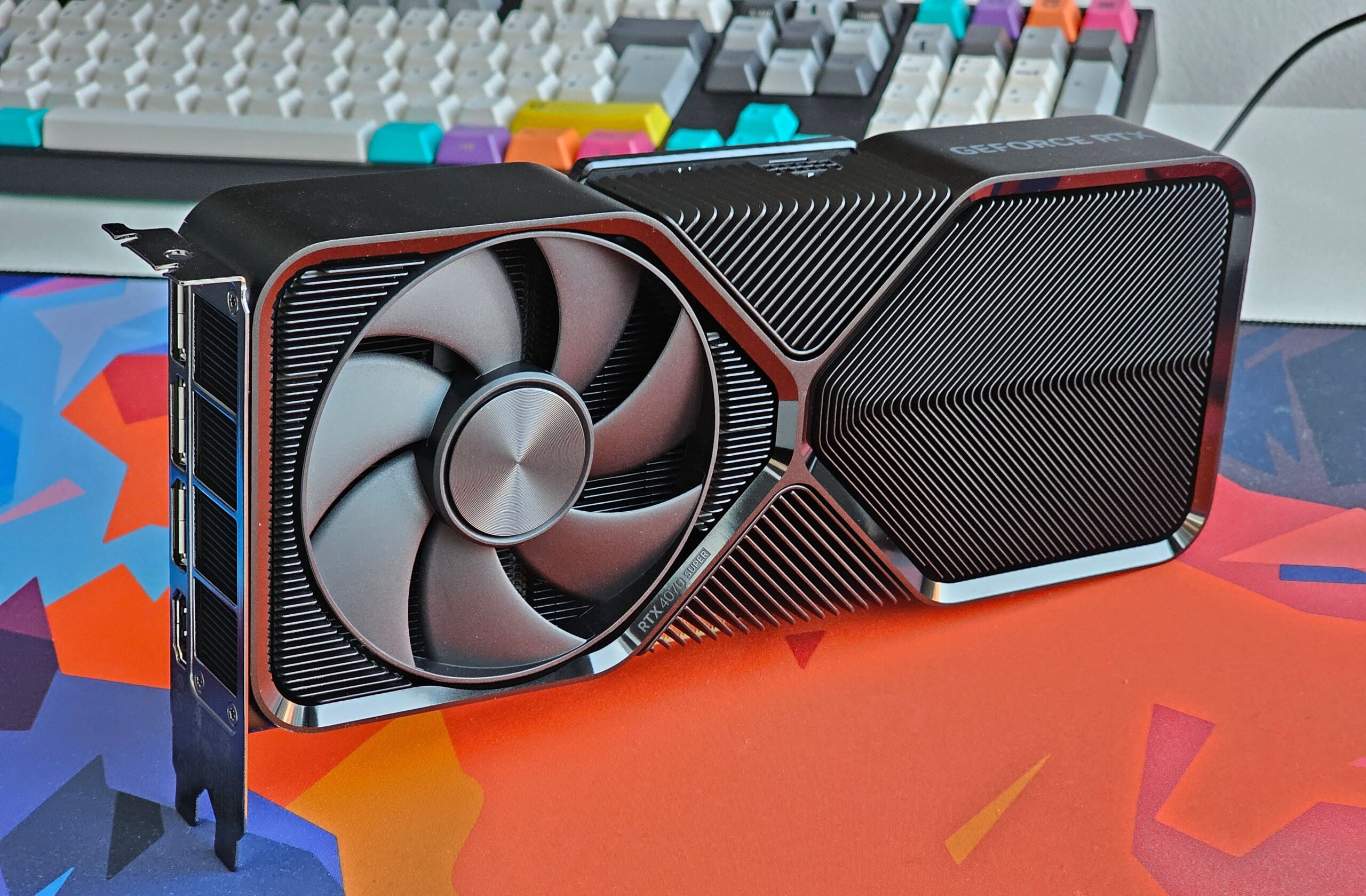
An ideal graphics card for this workload shouldn’t exceed a 2-slot width because most popular render engines scale almost linearly with additional GPUs. It’s an excellent way to add more rendering juice to your setup in the future.
To test this out, we’ll run the RTX 4070 SUPER Founders Edition through 4 popular GPU render engines to see whether it’s a viable option for creative professionals.
Maxon Redshift Benchmark 3.5.22
The GPU rendering workload and (Maxon) Redshift have become synonymous due to the latter’s popularity. We pit the RTX 4070 SUPER Founders Edition for this test against some of NVIDIA’s older GPUs.
PS. Although AMD’s Radeon cards are an option now, they are still not as fully supported as NVIDIA’s offerings, which won’t be an attractive proposition for most creative professionals.
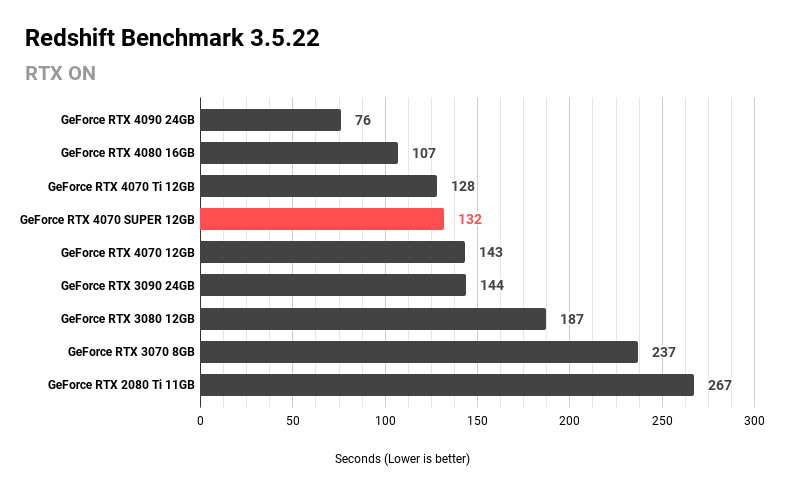
Our RTX 4070 SUPER does VERY well here, inching close enough to an RTX 4070 to be classified as nearly the same performance. That’s already a good value proposition, but there’s more!
An RTX 4090 completes the Redshift render in 76 seconds, while the RTX 4070 SUPER takes 132 seconds. Not only does this mean you’re getting more performance for the same price, but it also means that we’re finally seeing viable GPUs for a multi-GPU setup.
According to our scores here, two RTX 4070 SUPER graphics cards should be able to beat a single RTX 4090 at nearly half the price for Redshift workloads. Even a single RTX 4070 SUPER now convincingly trounces an RTX 3090. It’s a promising start!
Note – Redshift also makes decent use of the CPU, so our Ryzen 9 5900X could be holding it back in this particular test.
Cinebench 2024.1.0
Maxon’s Cinebench 2024 is based on the Redshift render engine, and as expected, we’re seeing a near-identical performance distribution compared to the Redshift benchmark above. Cinebench 2024’s score, too, is influenced by the CPU’s single-core performance you’re running the benchmark on, so be sure to keep an eye on the overall test system when comparing these scores to other reviews:
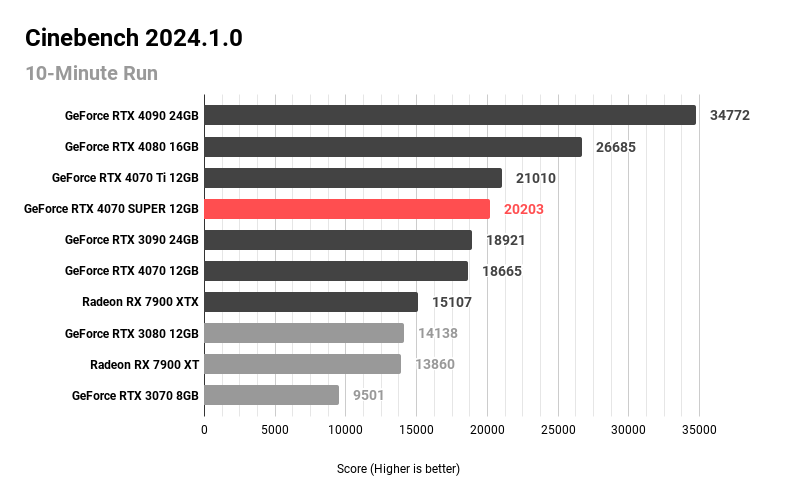
OTOY Octanebench 2020.1.5
While Redshift is a biased renderer, OctaneRender is an unbiased GPU render engine, which some artists and professionals prefer. Much like Redshift, though, Octane scales VERY well with multi-GPU setups (linearly) and only works with NVIDIA graphics cards.
Note – Octane does have a build that supports AMD GPUs on MacOS, but there is no news of anything on Windows.
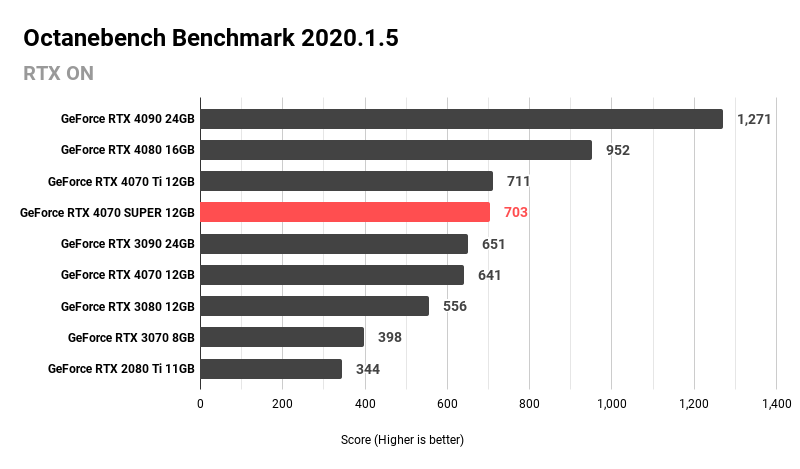
Our RTX 4070 SUPER does well here, scoring closer to an RTX 4070 Ti than an RTX 4070. Considering its MSRP and the fact that it outright beats an RTX 3090, we’re looking at a good value offering from NVIDIA after quite a while.
As Octane boasts linear scaling with additional GPUs, two RTX 4070 SUPER cards should easily beat a single RTX 4090. You can easily accommodate up to 4 into a full tower case (if the motherboard allows) because these cards are only 2 slots wide.
That said, the RTX 4080 is still very much out of reach, and if NVIDIA decides to launch a 2-slot RTX 4070 Ti SUPER that gets close to the RTX 4080 in performance, I think that’ll be our pick for render nodes this generation.
Performance per Dollar (Octanebench RTX)
From a value standpoint, the RTX 4070 SUPER edges out an RTX 4070, thoroughly crushing the last-gen RTX 3090 without mercy.
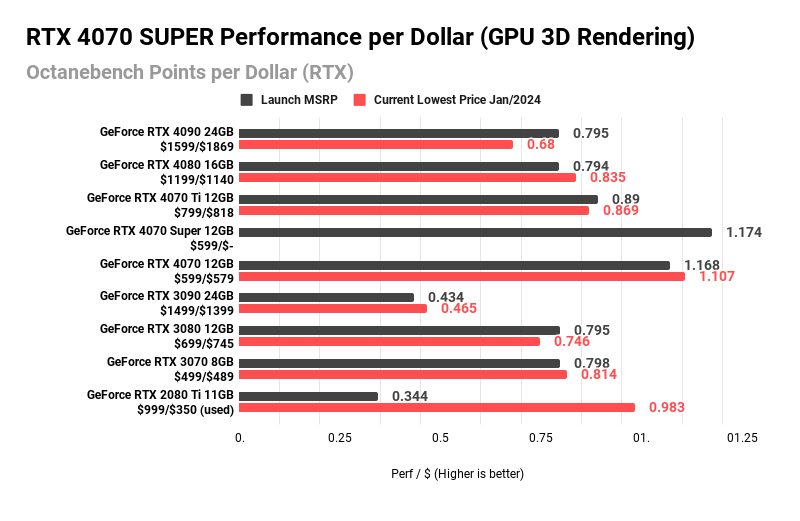
Unless you need the VRAM, there’s no reason to go with an RTX 30-series graphics card now, as they all offer sub-par value compared to the RTX 4070 SUPER for GPU rendering in OctaneRender.
V-Ray 6 CUDA/RTX Benchmark
Unlike the two GPU rendering engines above, V-Ray is a hybrid renderer that leverages both biased and unbiased rendering methods for its final result.
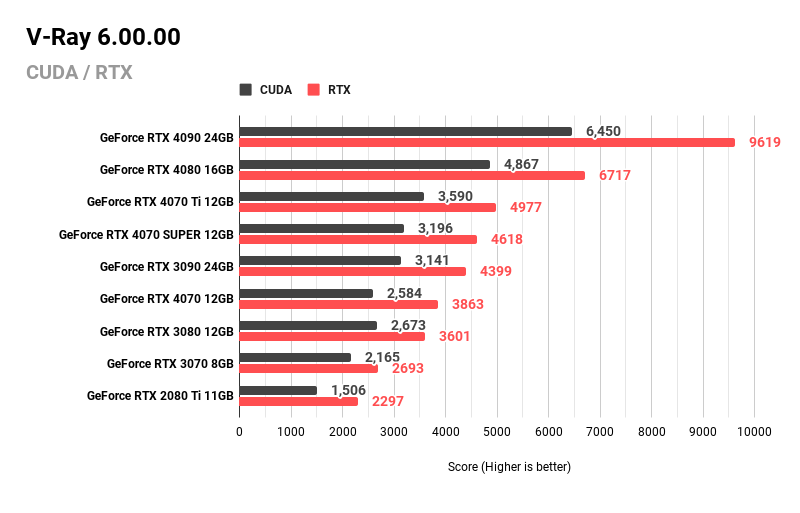
The RTX 4070 SUPER easily outpaces the RTX 4070 that it’s replacing with a nearly 20% higher score! As the theme has been, the RTX 4070 SUPER reaches within spitting distance of the RTX 4070 Ti (7% slower). It also outclasses the RTX 3090 easily – making the last-gen (almost) top dog largely irrelevant outside of workloads constrained by VRAM requirements.
Blender OptiX Render
Blender’s Cycles Renderer remains one of the most potent OptiX implementations for effectively leveraging an NVIDIA GPU to its full potential. In this benchmark, we’ll again have to focus on only NVIDIA, as OptiX is exclusive to NVIDIA GPUs.
Note – HIP-RT in Cycles is an option to accelerate the performance of AMD Radeon GPUs, but it’s still an experimental feature and not recommended for Professional use yet.
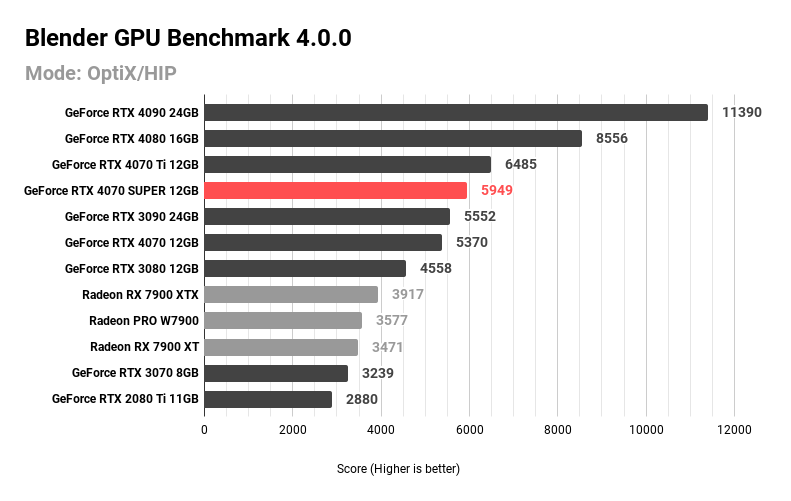
The Blender results are a bit surprising after the previously-recurring theme of the RTX 4070 SUPER nearly matching an RTX 4070 Ti. With Blender’s Cycles renderer in OptiX mode, the RTX 4070 SUPER sits bang in the middle of an RTX 4070 and an RTX 4070 Ti.
That’s not disappointing, but it does mean a relatively minor performance bump at the same price point. Nonetheless, this jump is enough for the RTX 4070 SUPER to outpace an RTX 3090 without breaking a sweat – making the deal a bit sweeter.
Motion Graphics and Animation Benchmarks for RTX 4070 SUPER: After Effects
Adobe’s Creative Cloud apps can either care about your GPU a LOT or only up to a certain extent. It’s weird, and often requires you to rerun the benchmarks to reconfirm the bizarre results you get at times. Still, it’s among the most popular sets of creative applications on the planet by a decent margin, so it is how it is.
Nearly everyone, from solo artists to large studios, relies on After Effects as an essential part of their creative process. Although more powerful GPUs do help performance in this particular Adobe CC app, it doesn’t scale well past a certain point.
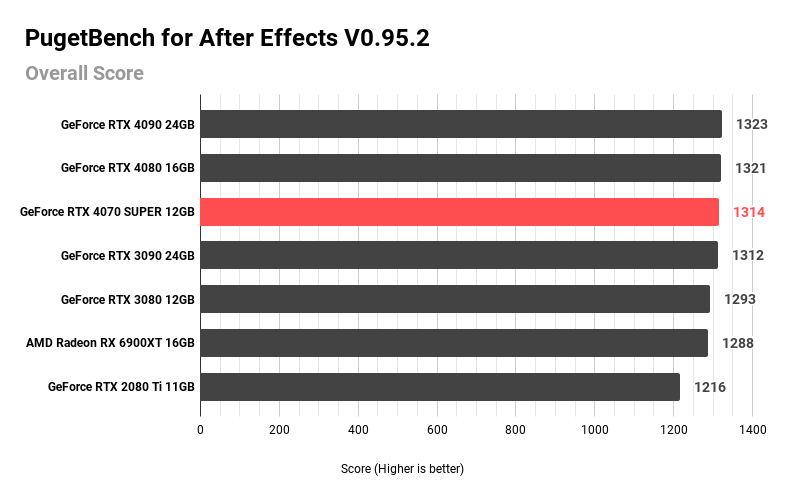
As expected, the RTX 4070 SUPER keeps up with the rest of the RTX 40-series lineup – edging out the RTX 3090 by a slim margin. What’s more, with its $599 MSRP, I’m confident that the RTX 4070 SUPER will most likely be our GPU of choice for After Effects.
Video Production Benchmarks for the RTX 4070 SUPER: Premiere Pro and DaVinci Resolve
PugetBench for Premiere Pro
Adobe’s Premiere Pro is integral to many professional video production pipelines, much like After Effects. However, price to performance will remain a factor again because performance in Premiere doesn’t scale well past a certain point of GPU horsepower.
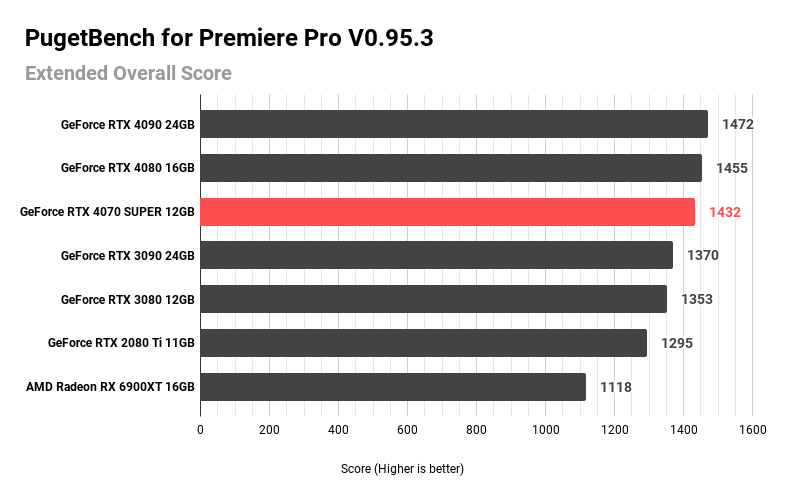
The results align with what we’ve seen, with the RTX 4070 SUPER easily outclassing the last-generation (nearly) top dog, the RTX 3090. The RTX 4080 and 4090 do offer around 1.6% and 2.7% performance uplifts, respectively, but their price points are just too high to consider them for Premiere Pro workloads.
PugetBench for DaVinci Resolve
Blackmagic’s DaVinci Resolve has been around for a long time, with its initial release dating back to 2004! It’s a popular video editing application that touts itself as the world’s only solution for editing, color-grading, VFX, motion graphics, and audio post-production.
Resolve generally manages to leverage GPU horsepower better than Premiere Pro, so this next set of benchmarks should have a better spread to them.
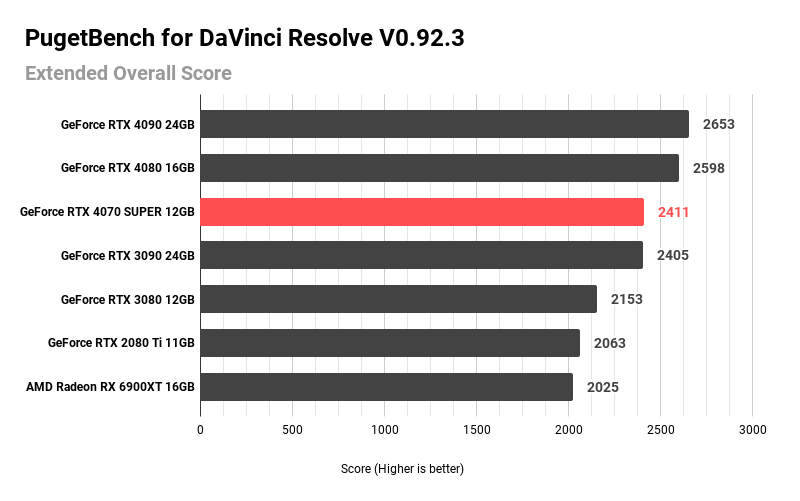
As expected, the RTX 4070 again comfortably sits in the middle of the pack, edging out the RTX 3090 without too much trouble. However, this time, its RTX 40-series counterparts give it better competition, with the RTX 4080 delivering a 7% performance uplift over the RTX 4070 SUPER.
For video production, it doesn’t look like there’s too much to gain from a performance POV because even an RTX 4090 only delivers a 10% improvement. An RTX 4070 SUPER will likely hit the value/performance sweet spot for DaVinci Resolve much like it does for After Effects.
Stable Diffusion Benchmark for RTX 4070 SUPER: txt2img, 512×512, TensorRT
If you haven’t been living under a rock for the past year, you’ll already know about all the “AI”-ness everywhere. However, some legitimate use cases exist for tools like Stable Diffusion for artists and other creative professionals.
Stable Diffusion, for example, is becoming the best way to quickly (and locally) prototype design ideas and thoughts to get a baseline of what you want to create. These rough creations are then used as a template to improve and build on, with your creativity.
However, generating these images is demanding work, and Stable Diffusion requires quite a bit of graphics horsepower and VRAM. So, we put the RTX 4070 SUPER with its 12GB VRAM through the paces to see how it holds up against the competition.
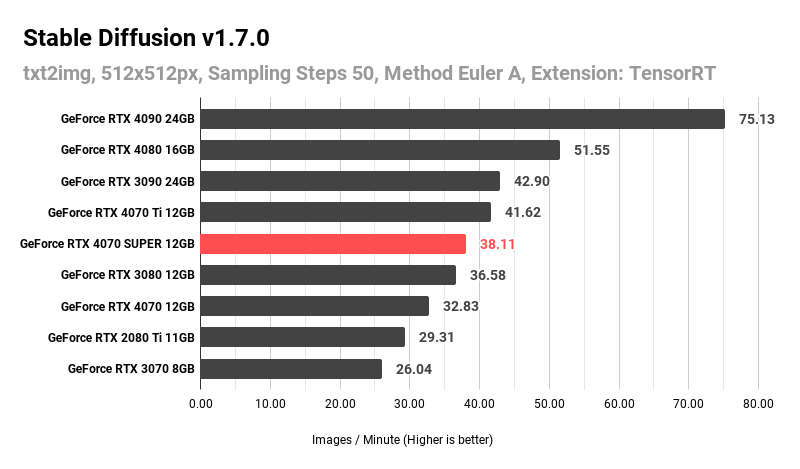
This result wasn’t too much of a surprise because the new SUPER card, yet again, inches close enough to the RTX 4070 Ti without touching it, and edges out both the RTX 3080 and RTX 4070.
However, the larger VRAM buffer of the RTX 3090 does mean that it scores a bit higher than the RTX 4070 SUPER – managing to beat it for the first time in our tests.
RTX 4070 SUPER PCIe Scaling Benchmark: Do PCIe Lanes or Generations Matter?
If you’ve been using PCs as render nodes, workstations, or even Gaming PCs, you might’ve wondered whether your PCIe link speed affects performance.
In our experience, the answer is – it depends.
Professionals working within the constraints of their GPU’s VRAM buffer shouldn’t notice any impact on performance. However, if your scenes are generally larger than your VRAM, you’ll see significant performance regression with fewer PCIe lanes and/or older PCIe generations.
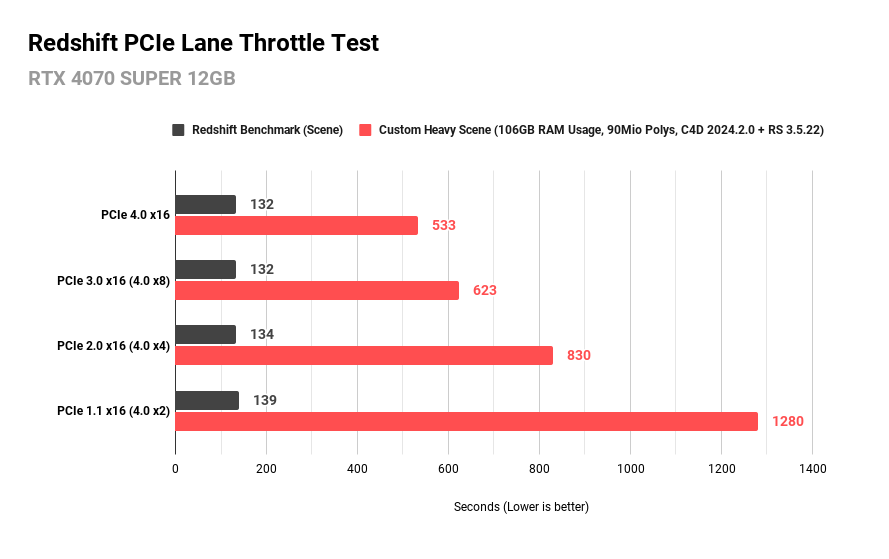
Our custom benchmark scene is taken from a real-world client project and totals a whopping 106GB with 90 million Polys. While Redshift’s benchmark scene doesn’t seem to care about PCIe lane count too much (it’s still marginally slower once you hit 4 lanes), our custom scene tells another story.
Even dropping to PCIe 4.0 x8 from PCIe 4.0 x16 significantly impacts (~17%) the time it takes to render this scene. Since these cards ARE viable for multi-GPU setups, it’s crucial to pick motherboards with a good PCIe layout and bifurcation to get the most out of them – assuming your scenes are larger than your GPU’s VRAM.
Power Consumption Analysis of the RTX 4070 SUPER: Power Draw, Perf/Watt, and Peak Power Draw
Power draw isn’t as important a factor for most users as it is for professionals frequently running day-long renders. In addition to testing the power drawn by an RTX 4070 SUPER in a broad range of workloads, we’ll also need concrete perf/watt numbers to recommend multi-GPU setups using the RTX 4070 SUPER.
First, let’s look at how the RTX 4070 SUPER fares (power-wise) in a variety of workloads, including gaming, stress tests (Furmark), and GPU renderers.
![RTX 4070 SUPER Maximum Power Draw [Stress, Game, 3D GPU Render]](https://www.cgdirector.com/wp-content/uploads/media/2024/01/RTX-4070-SUPER-Maximum-Power-Draw-Stress-Game-3D-GPU-Render.png)
The RTX 4070 SUPER sucks down around 208W of power in Shadow of the Tombraider (4K, Ultra, DLSS On, RT On), while hitting a peak of 192W in an Octane render (RTX on). V-Ray was surprisingly efficient here, reaching a peak of just 141W!
![Total Board Power Draw [Average] - Octanebench 2020.1.5](https://www.cgdirector.com/wp-content/uploads/media/2024/01/Total-Board-Power-Draw-Average-Octanebench-2020.1.5.png)
If we look at the average power draw of the RTX 4070 SUPER, it looks pretty good compared to other options in its weight class. However, if you’re considering running multi-GPU setups, note that 2 x RTX 4070 SUPER GPUs will draw close to 400W of power while only slightly outperforming an RTX 4090, which draws only 300W for the same render.
A quick look at the performance per watt chart below illustrates this more clearly.
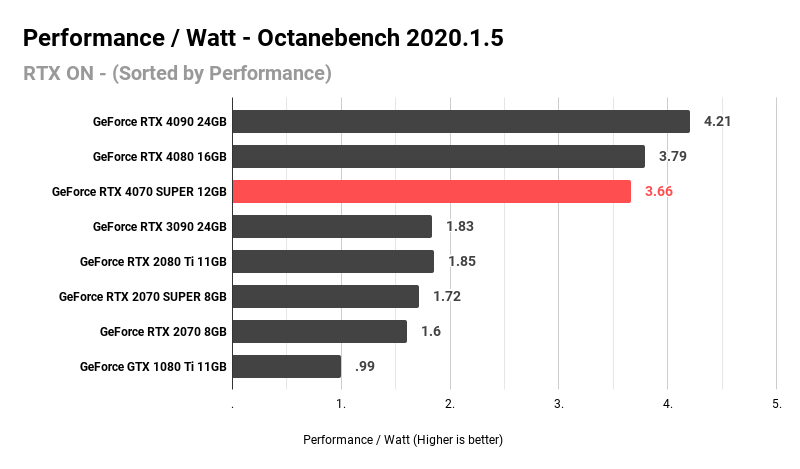
If you care about power draw, an RTX 4090 is still the pinnacle of efficiency. What’s more, the RTX 4080 looks better than the RTX 4070 SUPER from a performance-per-watt standpoint – making the upcoming SUPER cards (RTX 4070 Ti SUPER and RTX 4080 SUPER) even more interesting for GPU rendering workloads.
Idle Power Draw
Using two high-resolution monitors isn’t uncommon for serious creative professionals, so we wanted to see how much power an upper-mid-range card like the RTX 4070 SUPER would need to handle this configuration at idle.
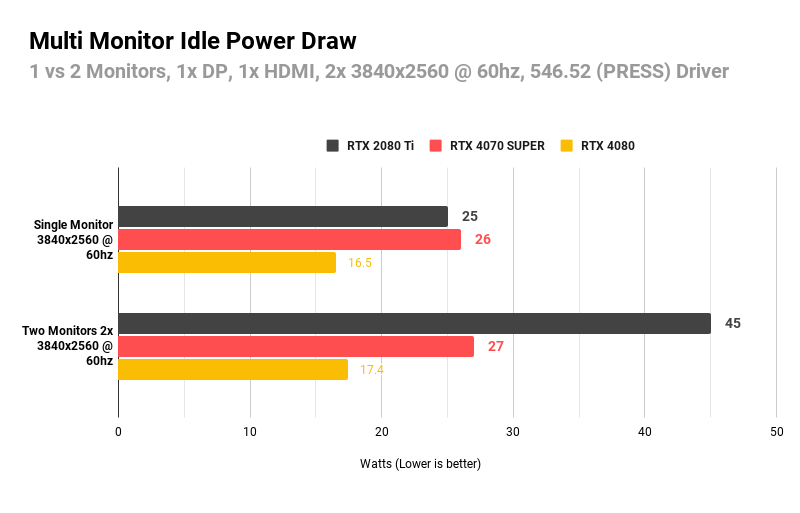
The results were a bit surprising. And yes, we rechecked this result several times to make sure we’re not seeing an outlier. The RTX 4070 SUPER draws MORE power than an RTX 4080 when running single or dual 3840×2560 (4K+) displays @ 60Hz.
Note: This could be a driver optimization issue, as we tested this on Beta drivers released to the Press. We’ll retest this after the retail rollout and post an update here if anything changes.
Where are all the AMD Radeon GPUs?
If you’re wondering where all the Radeon graphics cards are, the answer is: not here yet.
Many creative apps used in CG workflows don’t support AMD to a reasonable enough level to be viable.
Although the landscape is slowly changing with AMD’s RoCM push and HIP-RT implementations for many popular applications and render engines, it’s nowhere near usable if you can only trust stable release branches for your work.
Some apps do support Radeon graphics cards natively, like Adobe’s CC apps, but their performance isn’t ideal.
For example, the top-end Radeon RX 7900 XTX graphics card with a $900~ price tag gets outdone by the last-gen RTX 3090 in Premiere Pro. Remember, the RTX 3090 card consistently loses to the new $599 RTX 4070 SUPER Founders Edition.
Similarly, the Radeon RX 7900 XTX in a Blender render can only match the ancient RTX 2080 Ti! For reference, the RTX 4070 SUPER we tested here offers nearly double the performance of an RTX 2080 Ti with a $599 price tag!
Still, I’m hoping that AMD doesn’t give up its push into the professional space and continues working with developers and the industry to optimize better for Radeon graphics.
Competition is never a bad thing!
For gamers, it’s a different story altogether as AMD’s Radeon graphics cards are decent options.
Verdict: SUPER or Not so SUPER?
Let’s be honest here: the RTX 4070 SUPER is a price cut dressed as a product launch.
That’s not bad in any way, shape, or form. It’s just that this launch would have been so much more exciting if even this 70-class card had received a VRAM bump.
Oh well, we can’t complain about getting better performance at a lower price, can we?
The RTX 4070 SUPER graphics card is nearly an RTX 4070 Ti, without getting all the way there.
For video editing and motion graphics/animation workloads, I’m reasonably confident that this card, at its MSRP, will be the best bang-for-buck option on shelves for this generation of GPUs.
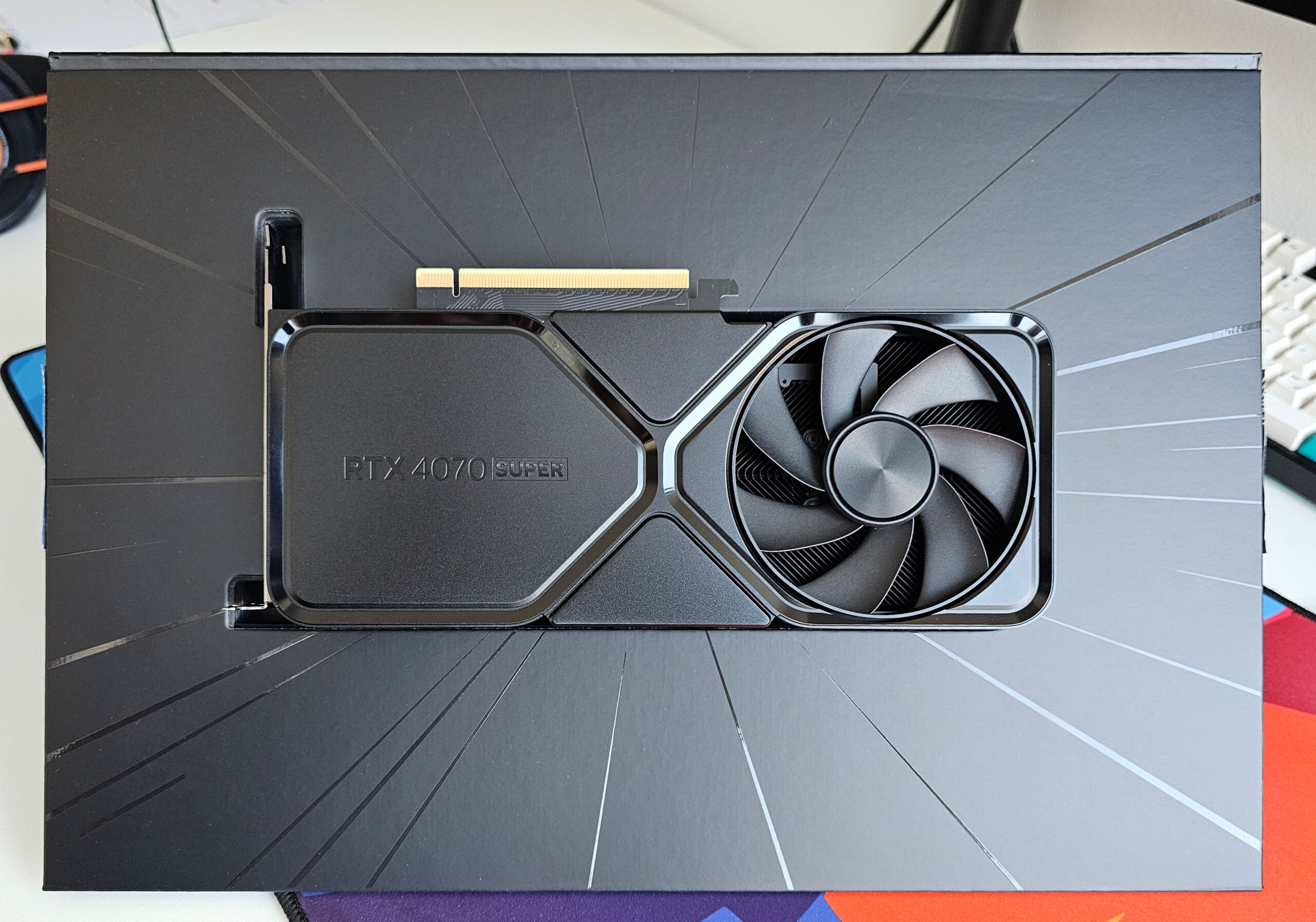
On the other hand, if you need a new GPU for your GPU rendering setup, I’d wait for all the new SUPER graphics cards to launch before pulling the trigger on this one. Keep your eyes peeled for more 2-slot solutions further up the 40-series line!
A 2-slot RTX 4070 Ti SUPER that’s nearly an RTX 4080 would be a truly ‘SUPER’ GPU for rendering.
If you’ve been holding out for a genuinely significant upgrade over something like an RTX 2070 or a 3070, the RTX 4070 SUPER is an excellent option. Not only does it finally beat the top-end card from NVIDIA’s last-gen RTX 30-series, but it does so at a somewhat reasonable price.
That said, you should know that NVIDIA’s RTX 5000 series (or whatever they’ll call it) is slated to launch in a year. So, if you’re happy with the performance you’re getting right now, you could stick with it for another year. However, if your work demands faster hardware, especially for the workloads we covered above, now is as good a time as any for an upgrade.
![GeForce RTX 4070 SUPER Reviewed for CG Workloads: NVIDIA’s New Value King [Review] GeForce RTX 4070 SUPER Reviewed for CG Workloads: NVIDIA’s New Value King [Review]](https://www.cgdirector.com/wp-content/uploads/media/2024/01/CGDirector-Nvidia-RTX-4070-SUPER-Review-18-1200x675.jpg)
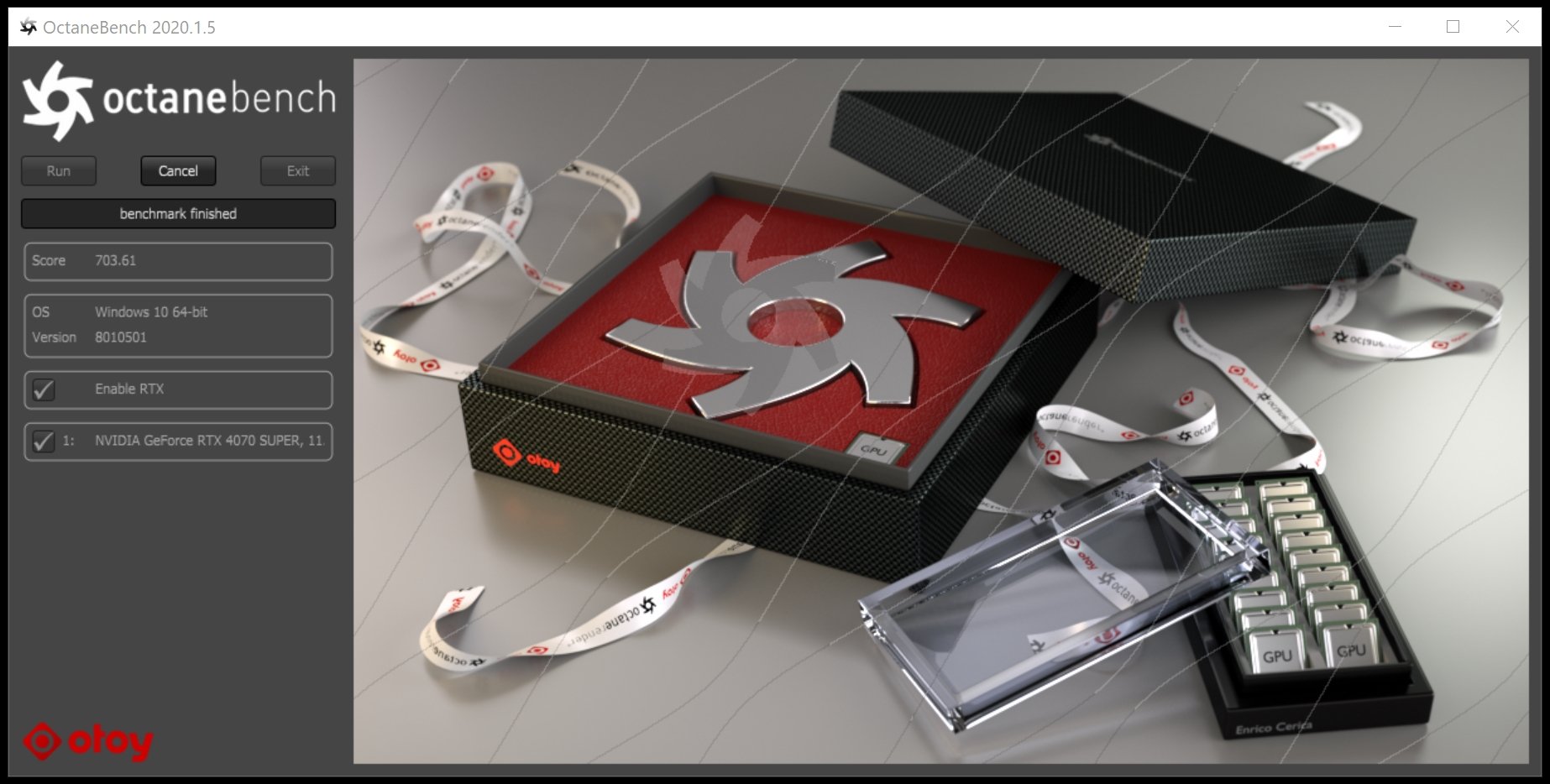
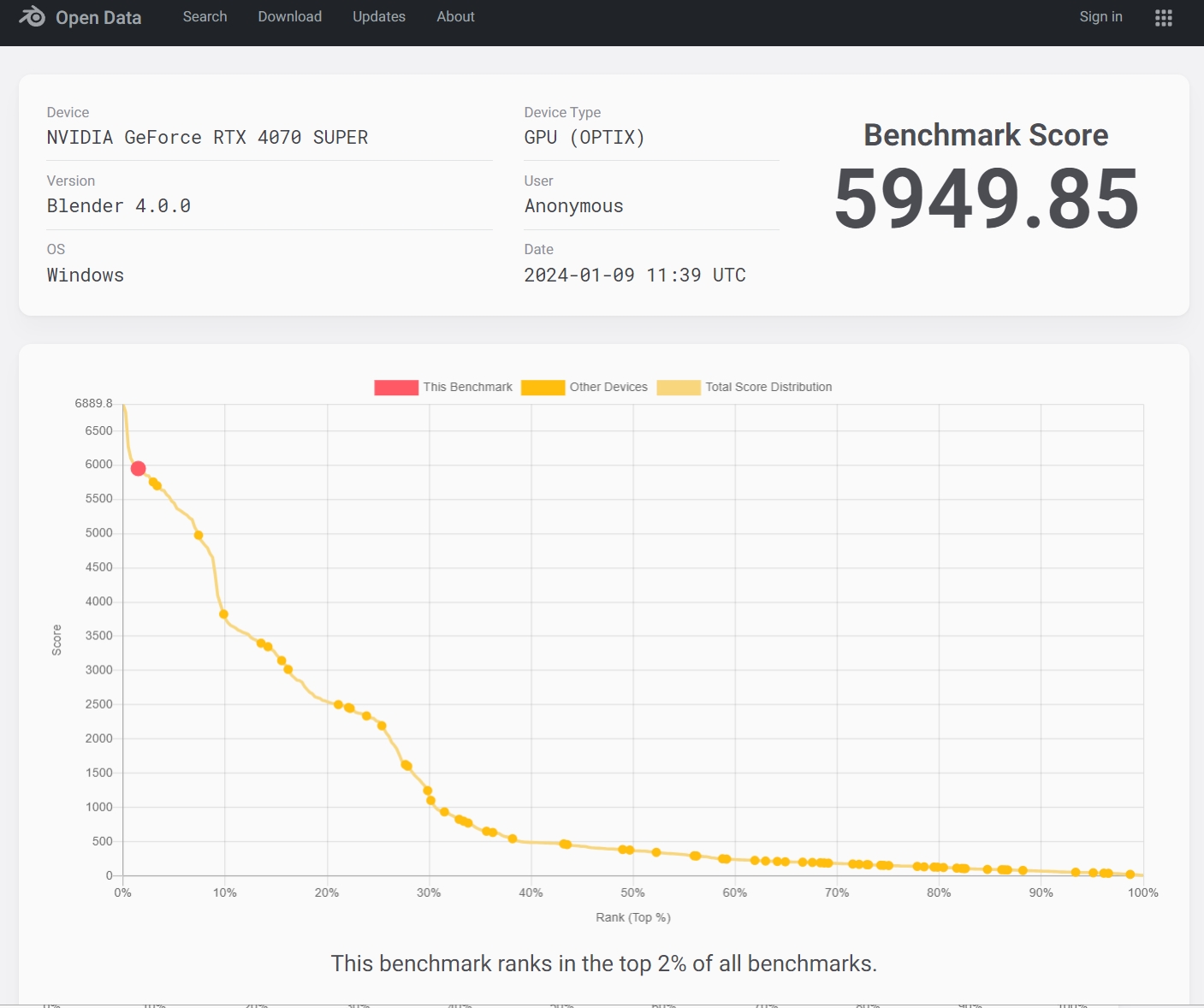
![NVIDIA RTX 4080 SUPER GPU Review [Content Creation, Rendering, AI] NVIDIA RTX 4080 SUPER GPU Review [Content Creation, Rendering, AI]](https://www.cgdirector.com/wp-content/uploads/media/2024/02/20240131_150445-594x335.jpg)
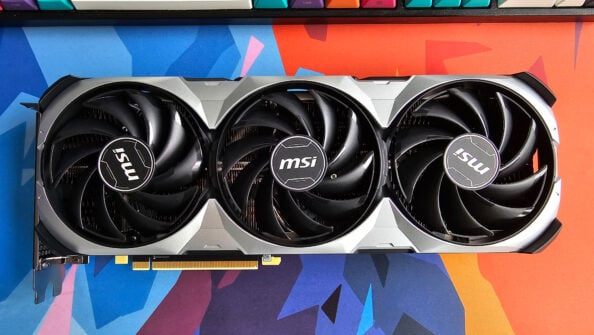
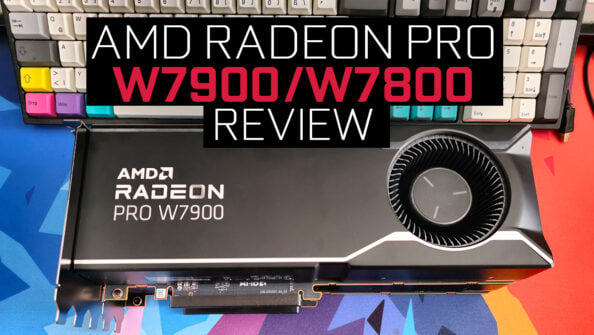
![Nvidia GeForce RTX 4080 16GB Review [Content Creation, Rendering, & Power Draw] Nvidia GeForce RTX 4080 16GB Review [Content Creation, Rendering, & Power Draw]](https://www.cgdirector.com/wp-content/uploads/media/2022/11/Nvidia-RTX-4080-16GB-Review-Content-Creation-Rendering-Power-Draw-Twitter-594x335.jpg)

0 Comments